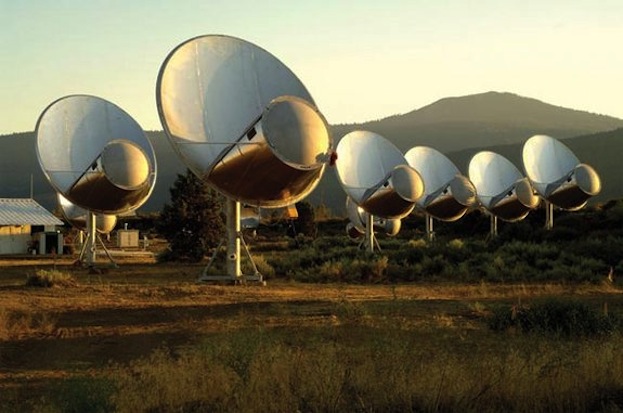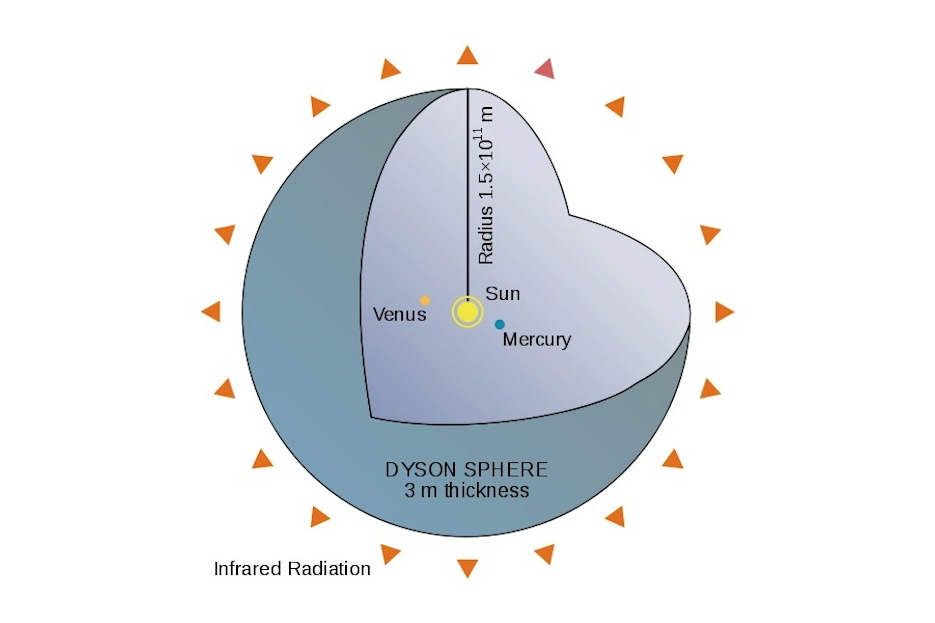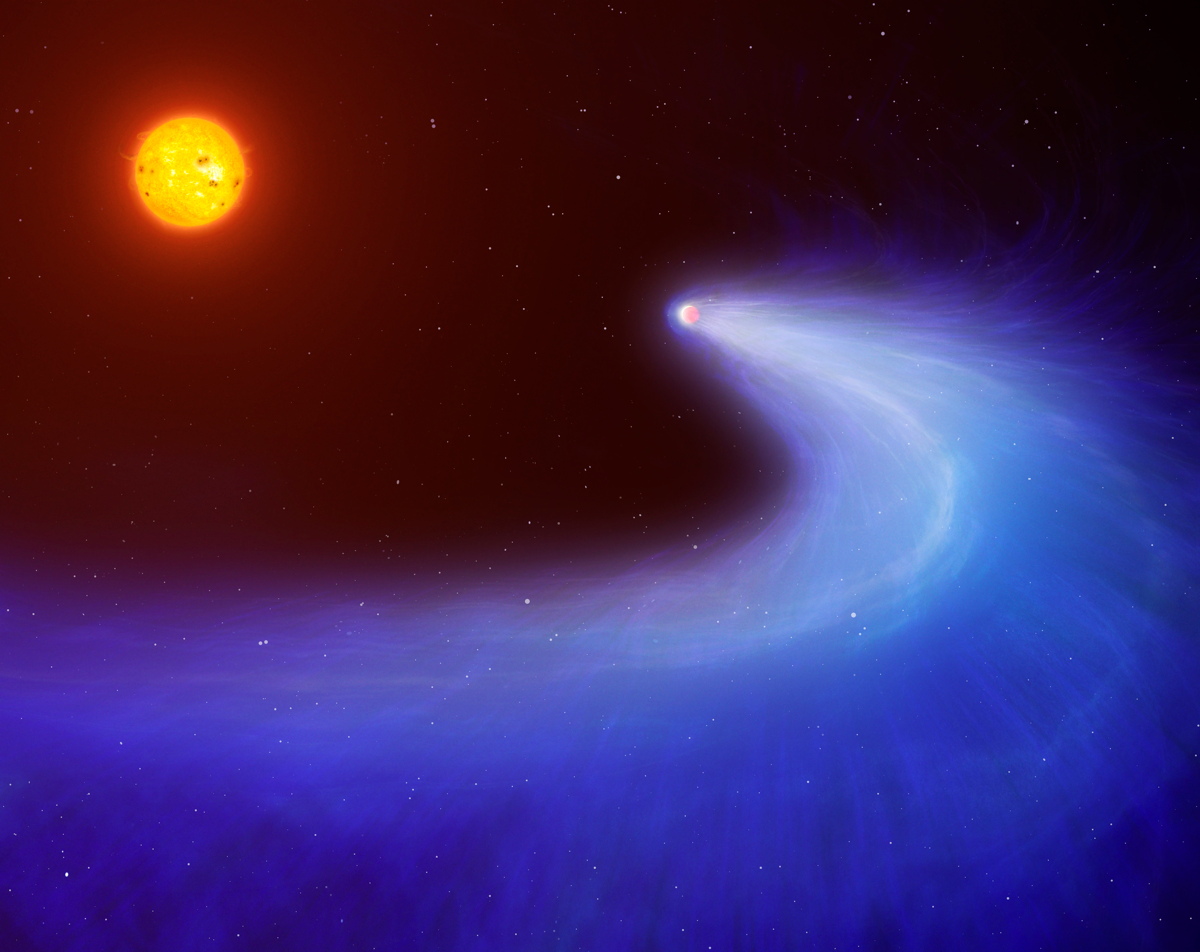Greetings, Earthlings! 8 Ways Aliens Could Contact Us

Beyond Earth

From a few subtle radio signals to alien monsters bombing the White House, science fiction is replete with depictions of aliens making contact with mere mortals.
While some of those depictions are far-fetched, it turns out that scientists have spent countless hours thinking about just how extraterrestrial civilizations could contact humans. Some of their ideas are nearly as fantastical as Hollywood's wildest tales.
From alien megastructures to miniature robots, here are some of the more radical ways "little green men" are likely to contact humans. [13 Ways to Hunt Intelligent Aliens]
Mega construction

Of course, signs of intelligent life don't have to be tiny objects — they could also be really, really big ones. Some scientists have argued that alien megastructures could be like a giant "come here" sign pointing other civilizations to their presence, Grinspoon said. In fact, scientists recently kept their eye on the star KIC 8462852, which dimmed and brightened mysteriously over the past several years. Some have argued that the star is surrounded by an alien megastructure that is occasionally blocking light from the star — though other explanations include a swarm of exoplanets or a planet-forming disc.
In December 2015, scientists reported a complete lack of communication from the region.
"We found no evidence of an advanced civilization beaming intentional laser signals toward Earth," study co-author Douglas Vakoch, president of METI International in San Francisco, said in a statement.
Laser pulses

Repetitive laser pulses could also be a sign of an alien race trying to get in contact with us, because, in theory, lasers could send signals or messages across vast distances, Grinspoon said. To find those laser pulses, researchers have zeroed in on extremely bright flashes of light, which are less likely to be caused by natural phenomena.
Get the world’s most fascinating discoveries delivered straight to your inbox.
So far, however, they've found no sign of alien signals.
Related: Humans May Be the Only Intelligent Life in the Universe, If Evolution Has Anything to Say
Robot probes

Alien signals may not be traveling in electromagnetic waves at all. Instead, signs of intelligent life may be very small objects that advanced civilizations send out to explore the universe.
"Most of the solar system is still unexplored, so for all we know, there could be alien probes orbiting on the asteroid belt or somewhere on the surface of Mars," Grinspoon said. "They could be quite miniature. Who knows what alien technology is capable of — they could be the size of golf balls."
Finding these objects could rely on the same technology scientists could use to sample those regions, Grinspoon said.
Radio waves

In a 1959 paper in the journal Nature, physicists Philip Morrison and Giuseppe Cocconi argued that scientists should scour radio waves for signs of extraterrestrial life. That's because radio waves travel relatively undisturbed through the universe, not being absorbed or re-emitted by celestial objects. Thus, the duo reasoned, any extraterrestrials hoping for their message to be relayed across long distances would logically resort to this medium, said David Grinspoon, an astrobiologist at the Planetary Science Institute.
For decades, that's been the predominant way to search for aliens. For instance, the Search for Extraterrestrial Intelligence (SETI) has scoured telescope data for signal-like radio waves.
Of course, the whole search rests on the assumption that aliens are thinking just like us, which may not be the case.
"Aliens don't necessarily read Nature magazine," Grinspoon told Live Science.
Radiating away

Of course, not all aliens will be on a mission to find other creatures in the big, lonely universe. Some may be more like hermits, hoping to hide their existence. If that's the case, they'd make no attempts to broadcast their existence.
However, theoretical physicist Freeman Dyson has argued that even celestial hermit kingdoms might develop technology to siphon energy from a nearby star using an orbiting object known as a Dyson sphere.
"It doesn't have to be a sphere at all," Dyson previously told Live Science, "just any place where aliens happen to be generating a lot of energy."
These Dyson spheres would then throw off waste heat, an inescapable byproduct of harnessing star power, in the form of infrared radiation. Already, researchers at the Allen Telescope Array and the Wide-field Infrared Survey Explorer(WISE) space telescope are scouring the skies for signs of such waste radiation.
Star dance

Others have proposed that highly advanced civilizations could be advanced astro-engineers, moving stars into bizarre or highly geometric alignments that are unlikely to occur by chance, Grinspoon said.
"They could construct something that would be visible from a huge distance across the galaxy, or even from another galaxy, that would be obviously artificial," Grinspoon said. "Nobody's seen anything like that."
Others might actually harness star power to create messages. For instance, if aliens could spin small and extremely dense stars called neutron stars in just the right way, they could make these stars emit light as a kind of flashing beacon, Grinspoon said.
In fact, when neutron stars were discovered, scientists thought they might be messages from "little green men." (That discovery earned astronomer Antony Hewish the Nobel Prize in physics; his graduate student Jocelyn Bell Burnell, who first discovered the star, was passed up for the high honor.) [Nobel Would-Bes: 6 Scientists Who Were Passed Up for the Prize]
Needle in a haystack

Even if aliens are trying to make contact, there's no guarantee we'd receive their messages. The universe is 91 billion light-years across, and messages could come from anywhere.
To narrow the search, some argue that aliens are likelier to send messages our way if they know we're here. A study published in February 2016 in the preprint journal arXivfound that there are 82 stars we know of in Earth's transit zone, or an area of the sky that has a direct line of sight to Earth.
"Along this line, there is a very small band— a strip of less than a degree from where extrasolar observers would see the Earth transiting the sun," said study co-author René Heller, an astrobiologist at the Max Planck Institute for Solar System Research in Göttingen, Germany.
Heller and his colleague Ralph Pudritz at McMaster University in Hamilton, Canada, predicted that there may be up to 100,000 stars within this zone of the sky — some of which could have planets teeming with life orbiting them.
One advantage of this approach is that the tiny slice of the sky is relatively easy to search.
"You could just skim or scan the whole Earth transit zone over the course of maybe a few dozen nights or so, depending on how large the field of view of your radio telescope is," Heller told Live Science.
If these hidden exoplanets harbor life, they'd also be in the same galactic neighborhood — just a few hundred light-years away at most.
Part of space exploration

The search for intelligent life-forms may not need dedicated megaprojects, Grinspoon said.
"We're going to send spacecraft out to these places to explore," Grinspoon said, referring to spots like the asteroid belt. "So while we explore the solar system, we should at least be aware of the possibility of finding something really anomalous that would be artificial."
Either way, if there are smart creatures in the universe, odds are, they know exactly what to do to make contact.
"Mathematically, it's pretty easy to show, and logically, it makes sense that they would be much more advanced," Grinspoon said. "We're such babies as a civilization; anybody that is outside trying to contact us probably has a much longer relationship with science and technology."
So, if aliens are trying to contact us, it's probably our fault that we're missing their signals, Grinspoon said.

Tia is the editor-in-chief (premium) and was formerly managing editor and senior writer for Live Science. Her work has appeared in Scientific American, Wired.com, Science News and other outlets. She holds a master's degree in bioengineering from the University of Washington, a graduate certificate in science writing from UC Santa Cruz and a bachelor's degree in mechanical engineering from the University of Texas at Austin. Tia was part of a team at the Milwaukee Journal Sentinel that published the Empty Cradles series on preterm births, which won multiple awards, including the 2012 Casey Medal for Meritorious Journalism.


